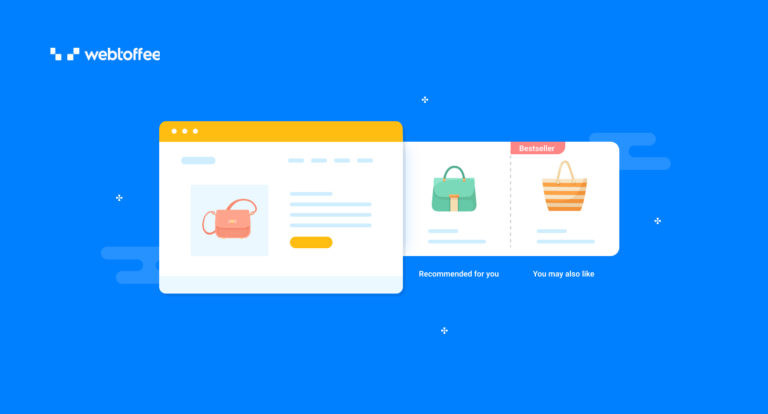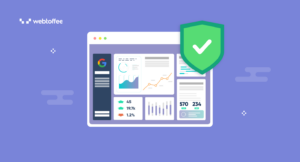This blog post discusses various strategies for implementing recommendations on different pages of an online eCommerce store. It also mentions the tools you can use to implement each recommendation.
Product recommendation, in simple terms, is a system that filters out the products that your customers would be interested in or would like to purchase.
Recommending products to grow sales is not a new concept; it was the dedicated duty of store assistants in brick-and-mortar stores. But product recommendations have come a long way since.
Suggesting products in an online environment is completely different from that of an offline store. There is no intelligent system in place to identify the needs of your customers and suggest products based on that.
You can, however, counter this by implementing different kinds of recommendations in the store. Let’s look at them in detail here.
Why Are Product Recommendations Relevant?
56% of online shoppers are more likely to return to a site that recommends products!
The whole aim of product recommendations is to offer personalized experiences to your customers. Helping your customers could nurture a healthy relationship with your store.
Let’s draw motivation by looking at an example – YouTube.
I often feel that my YouTube recommendations understand me better than I myself do. The app just suggests to me the things I am interested in – which I didn’t even know I did! This is YouTube’s AI recommendation system in its full glory.
This relationship between the tool and its consumers creates a bond of trust which will keep the consumers engaged and loyal to the platform. Though sales are your immediate goal, you should define this relationship generation as the end goal of the product recommendation system that you are planning to set up on your website.
Moreover, such a system recommendation system would help you sell more!
Advantages Of A Recommendation System In eCommerce
Product recommendations are now becoming an integral part of eCommerce. A survey by Accenture found that 91% of consumers are more likely to shop from a store that provides relevant offers and recommendations.
# One main reason behind the success of recommendation systems is that customers prefer a personalized experience. They feel more valued and comfortable if they feel like their needs are met by the store. Personalization should be at the front and center of your store.
# It is easier to retain current customers than acquire new ones – both in terms of financial and marketing efforts. Recommendations can make your customers purchase more, contributing to the increase in the average order value (AOV).
# Another great advantage of a product recommendation system is that it helps out your customers. It helps them reduce the total browsing time to find products and even assists them in identifying the best-suited products for them.
# With recommendation systems, you can analyze the customer behavior in the store and generate recommendations in real time. The most famous example of this is Amazon, which increased its revenue by 29% with the help of a recommendation engine.
# An online product recommendation system is more advantageous than its offline counterpart from a ‘bias perspective.’ That is, an auto-generated recommendation is unbiased. For instance, a salesperson might not be interested in serving some customers – that’s human nature. However, a product recommendation engine will generate recommendations based on the store and user history without bias.
What Is A Product Recommendation Engine?
A product recommendation engine is a tool that makes your online shopping experience more personalized by providing recommendations based on your shopping behavior. It looks at things like your profile, what you browse, and what you’ve bought before to suggest products you might like. These engines use clever technology to learn and improve their recommendations constantly.
They don’t just consider what you do on the website but also look at other things like how you shop in stores, your location, and even your emails. This helps them get a better understanding of what you prefer and what might interest you.
Product recommendations are really powerful. For instance, Amazon, a big online store, makes more than a third of its sales from recommendations. Creating WooCommerce product recommendations on your store can help you increase your net revenue.
Common WooCommerce Product Recommendation Strategies
Placing recommendations in the right places is as important as suggesting the right product. To make it easy for you to understand where to recommend what, we will categorize the strategies with respect to their location.
Single Product Page
You will have the full eyes of your customers once they enter the product pages of individual items. You can implement the following types of recommendations on such a page.
Frequently Bought Together
Products that your customers frequently purchase with an item are termed as ‘Frequently Bought Together’ (FBT). For example, a shoe cleaning solution with a sneaker.
‘Customers who bought this item also bought’ is another common title of the frequently bought-together item section.
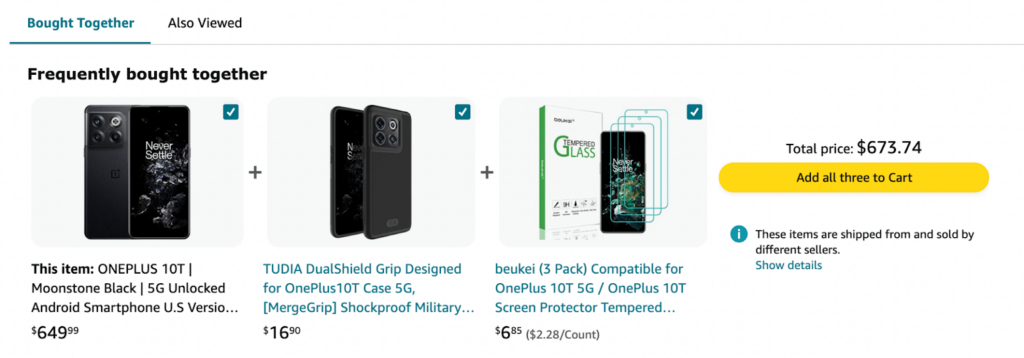
A simple technique to accelerate the frequently bought together product sale is offering a discount on the FBT bundle. For instance, 5% discount on the cart when purchasing the shoe cleaning solution with the sneaker.
Complete The Look
‘Style it with’ or ‘Complete the look’ is one of the most common strategies used by clothing retailers. These recommendations are designed in such a way that it is easy for your customers to find the products that match the item they are browsing.
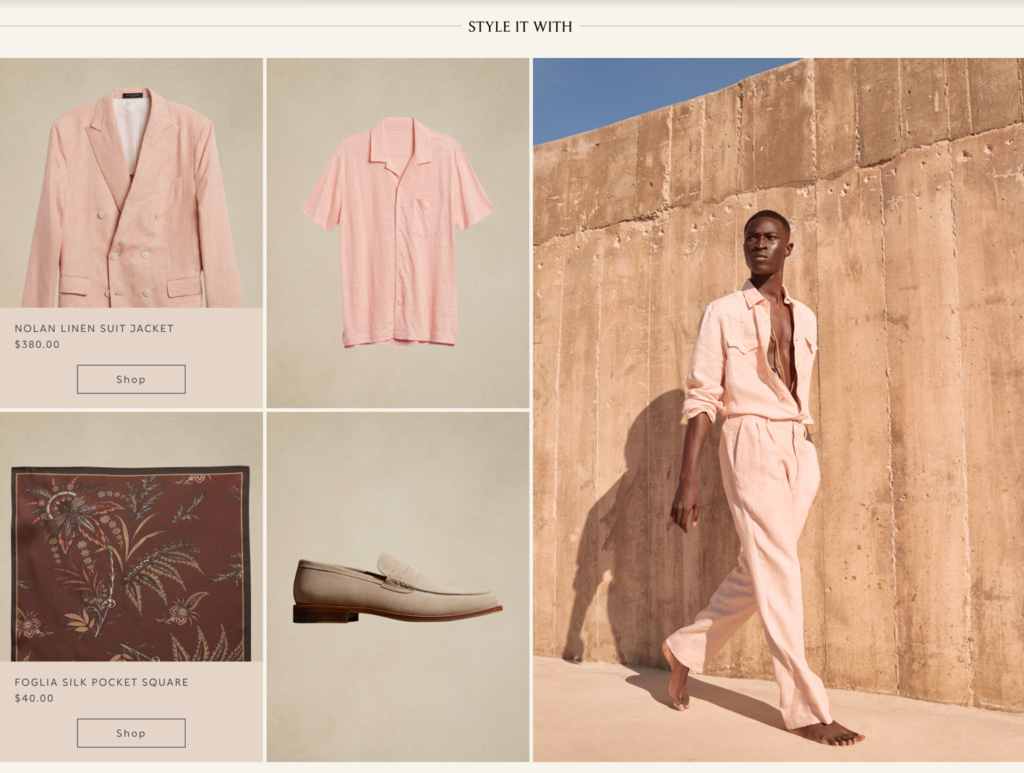
This reduces the net purchase time and also boosts customer satisfaction. For example, T-shirts and shoes with a trouser. It is ideal to hand-pick such products.
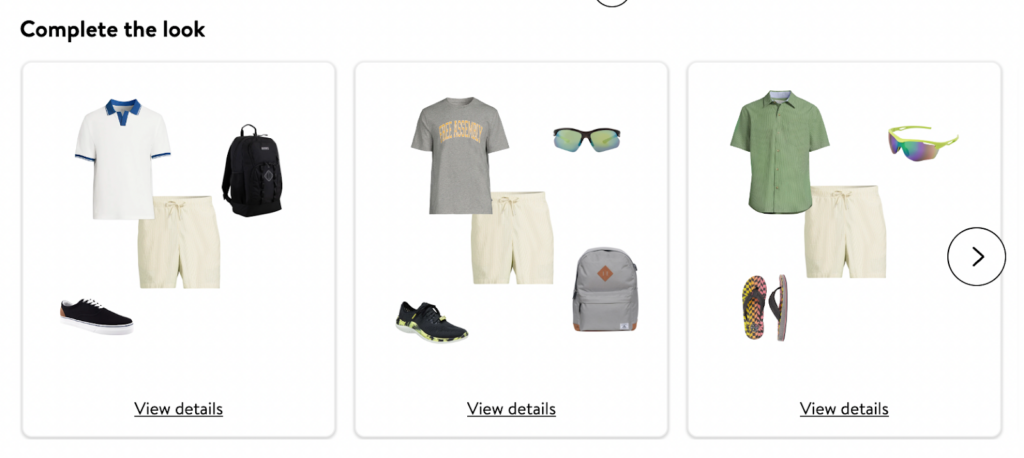
Items That Pair Well Together
This recommendation is similar to the above-mentioned ‘Complete the look’ – but for non-fashion-based products.
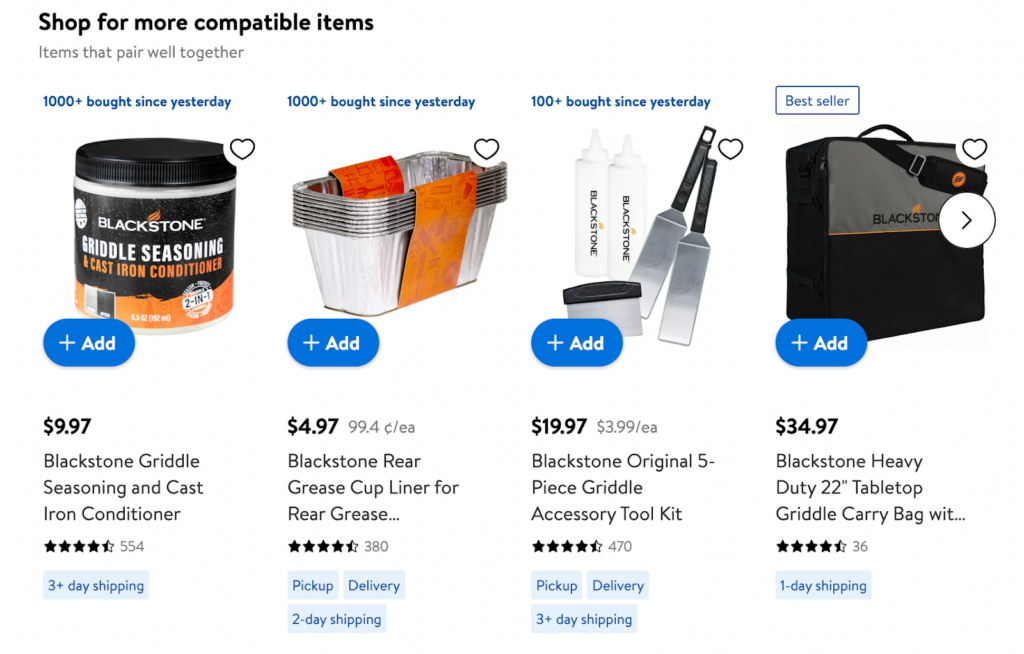
In this example, the products that are compatible with an iron grill are added as product suggestions.
Upsells
Upsells are recommendations where you suggest products whose price or value is higher than the item your customers are browsing. The recommended items are usually similar to the current item.
It can have the same category, tags, or attributes but should offer more value or is costlier than the current item.
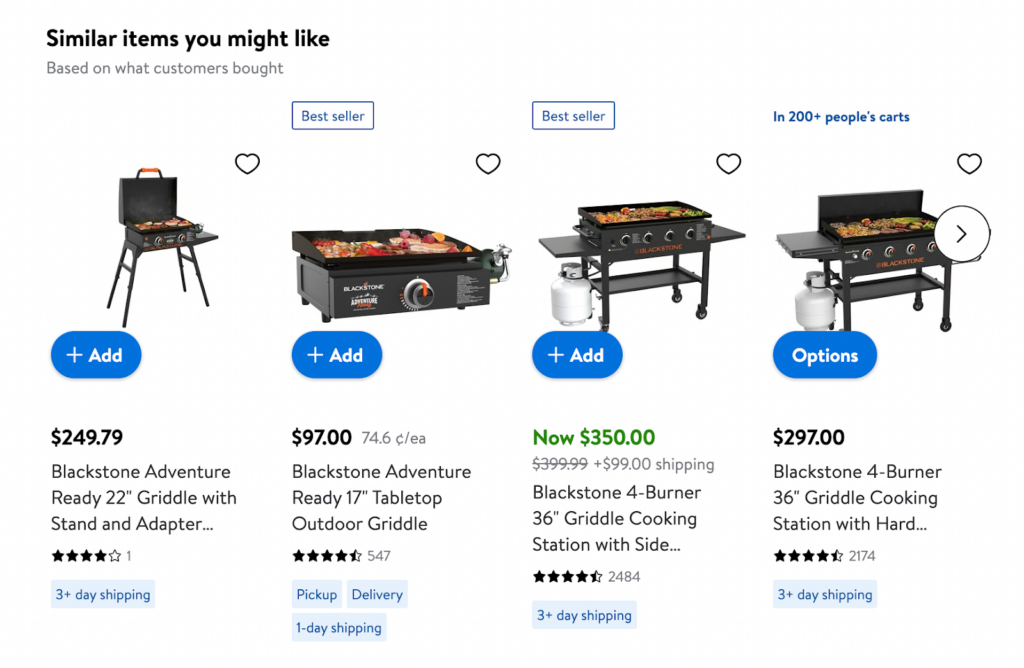
For example: Recommend outdoor grills with more functionalities or prices than the grill the customers are currently looking at.
Discounted Products
Showcase products similar to the currently viewed products but are available at a discount. For example: recommend laptops with slight spec variations to help identify the available options seamlessly.
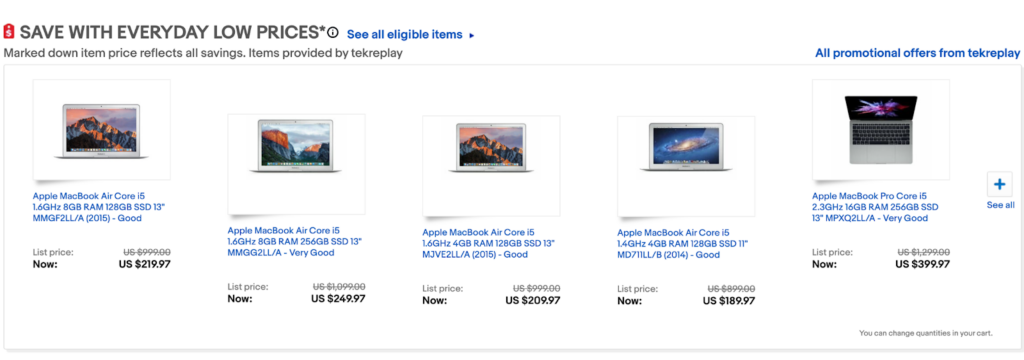
Showcasing products currently running offers as such a recommendation could guarantee sales.
Related Products
Related products are products whose functionalities and prices lie close to the currently viewed product. For example, recommend different varieties of pants to users looking for pants.

Related product suggestions can be set up based on the category, tags, or attributes. You may choose the related factor for your store based on your requirements.
Category Page
Category pages are one of the most visited pages on every eCommerce site. It is where you can find all the products that you might like at once. For example, to buy an item of clothing for a female friend, we would first go to the Female > Clothing category.
Let’s look at the recommendations that can be implemented on the category page of your store.
Featured Products
You usually make a featured product list with the items that you want to put on the spotlight. Adding these products to the top of your category page would help you attract more eyes to them.
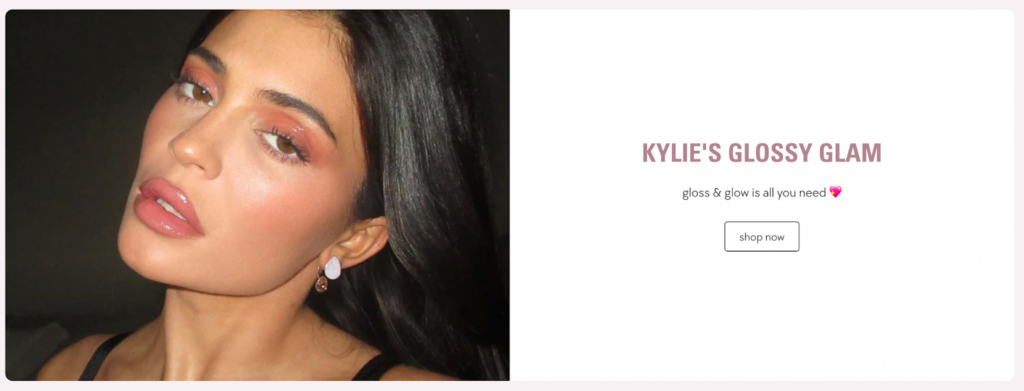
Here, in this example, it is sure that nobody will miss out on seeing the products in ‘Kylie’s glossy glam’ collection.
Bestsellers
Best sellers are products that are the most sold in your store. A bestseller tag on your product acts as social proof and gives users the trust they need to purchase it.
Identifying best sellers based on categories and displaying them on the category pages is one of the best product recommendation techniques.
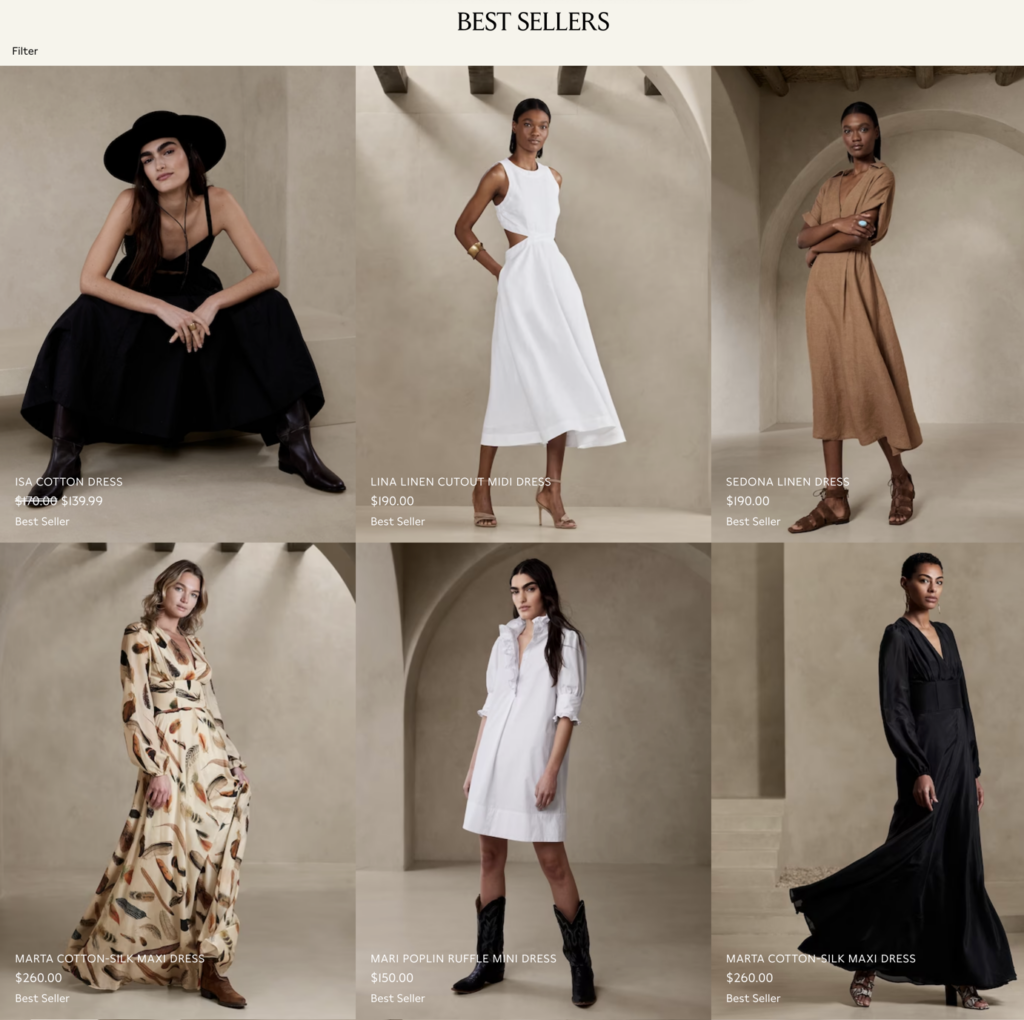
In addition to this, you may also add a separate bestseller page on your website. This would enable your customers to identify all the bestsellers (irrespective of their categories) at one location of your store.
Top Rated
Top-rated products are the products that have satisfied your customers the most. The positive reviews that the product has acquired would act as social proof and help to sell it more easily.
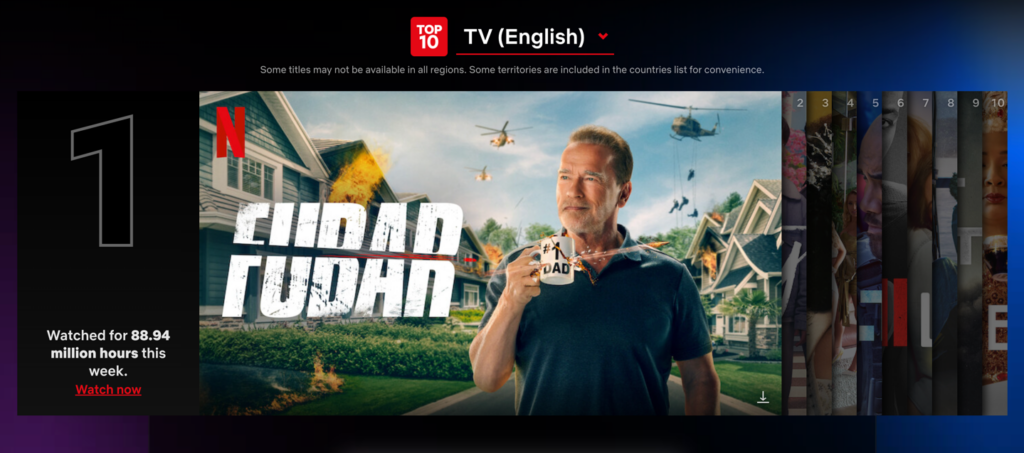
Showcasing such products on your category page would surely generate more sales for such products.
Trending
You can add such a section to showcase products that are the most trending at that period of time. For example, thermal wear during winter.
This can be identified based on the store purchase history during a specific period of time.

Shop Page
The following types of product recommendations can be set up on your eCommerce store shop page to improve sales.
Daily Offers
Feature products daily and showcase them on the top of your shop page. This can improve the net sales figures. Users landing on this page will not miss seeing the deals.

New Arrivals
The freshness of the products is an important criterion when contemplating purchasing a product. You can boost your newly arrived products in your store by displaying them on the shop page of your store.
Also, new arrivals belonging to a specific category can be added to the corresponding category page of the store.
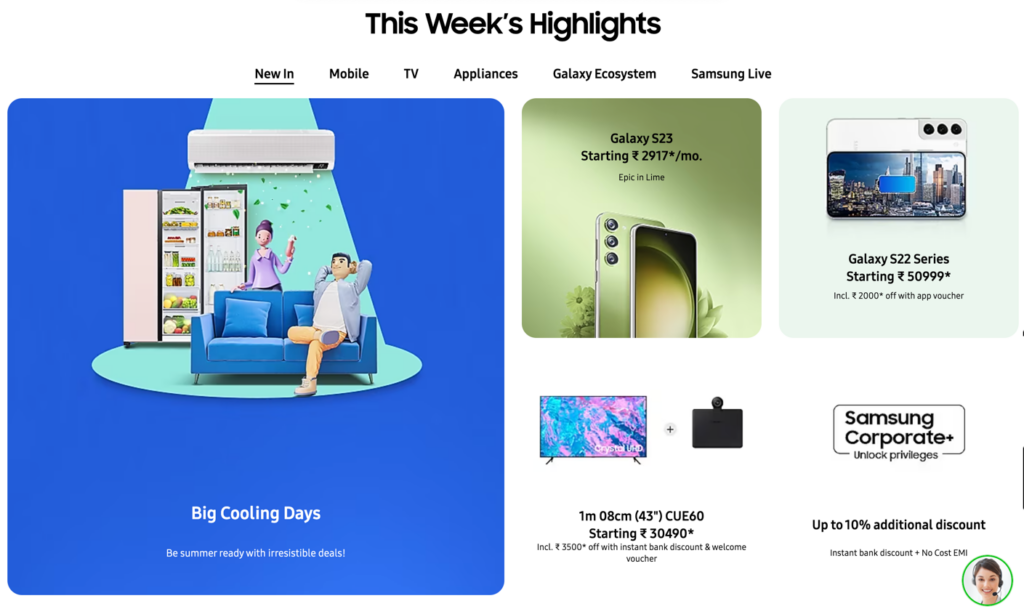
Cart & Checkout Page
Cart and checkout pages are where you want your customers to make quick decisions. Recommending products retailed at small prices is ideal for such locations. Let’s see the recommendation types you can implement at the cart and checkout.
Cross-Selling
Cross-selling is a type of recommendation where you suggest alternatives for a product. It can also be products that are complementary to a given product.
Usually, the prices of the cross-sell recommendations would be lesser than the product in the cart.
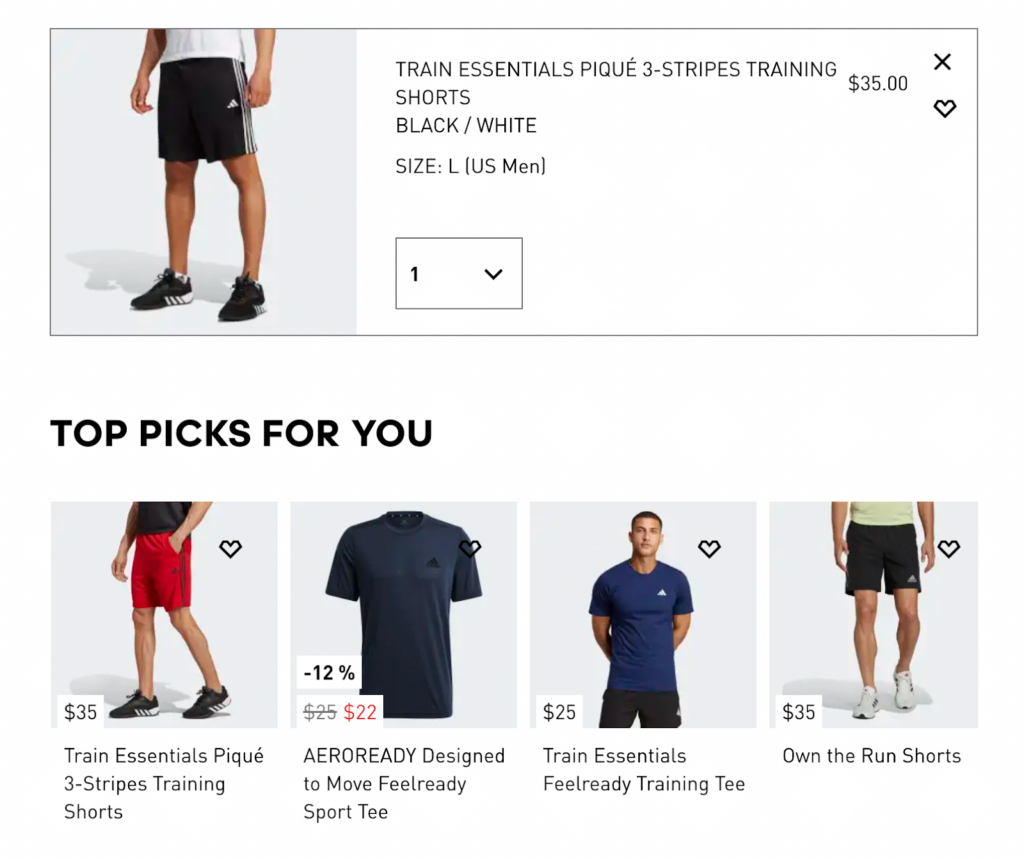
On-Sale Products
Discounts are a benchmark for a lot of customers. But showcasing them on your cart or checkout page does that. However, just offering discounts doesn’t warrant that your customers will know of it.
Discounts on lower-priced products would help customers add such items to their cart without further scrutiny.
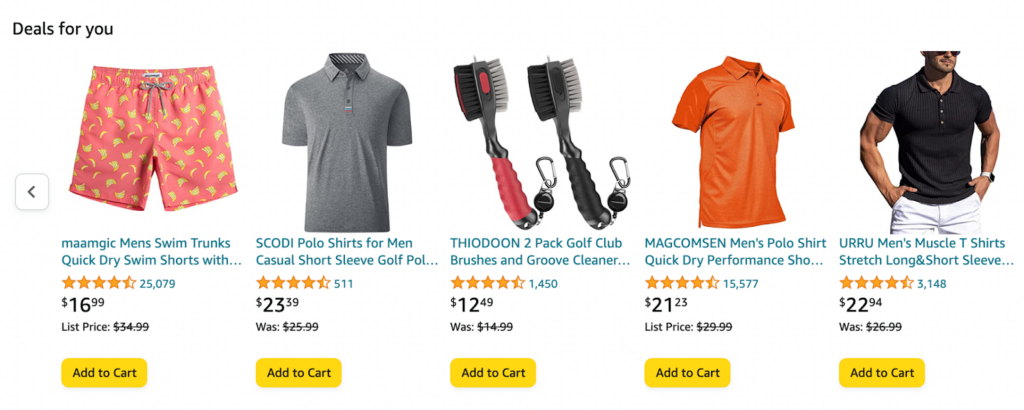
Recently Viewed Products
Customers can make faster decisions if you suggest products that your customers have already examined. Therefore such products in the cart or checkout page would help increase the average order value.
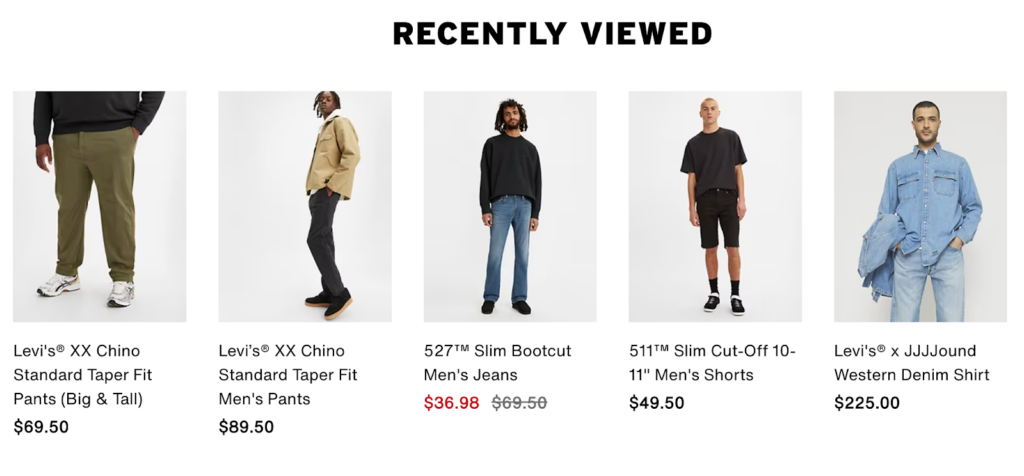
Get Free Shipping By Adding More
Customers would do anything to get free shipping! It is a great idea to suggest products that, when added to the cart, will qualify the cart for free shipping.
You can set this up by triggering the suggestions when the cart subtotal falls below the minimum free shipping criteria.
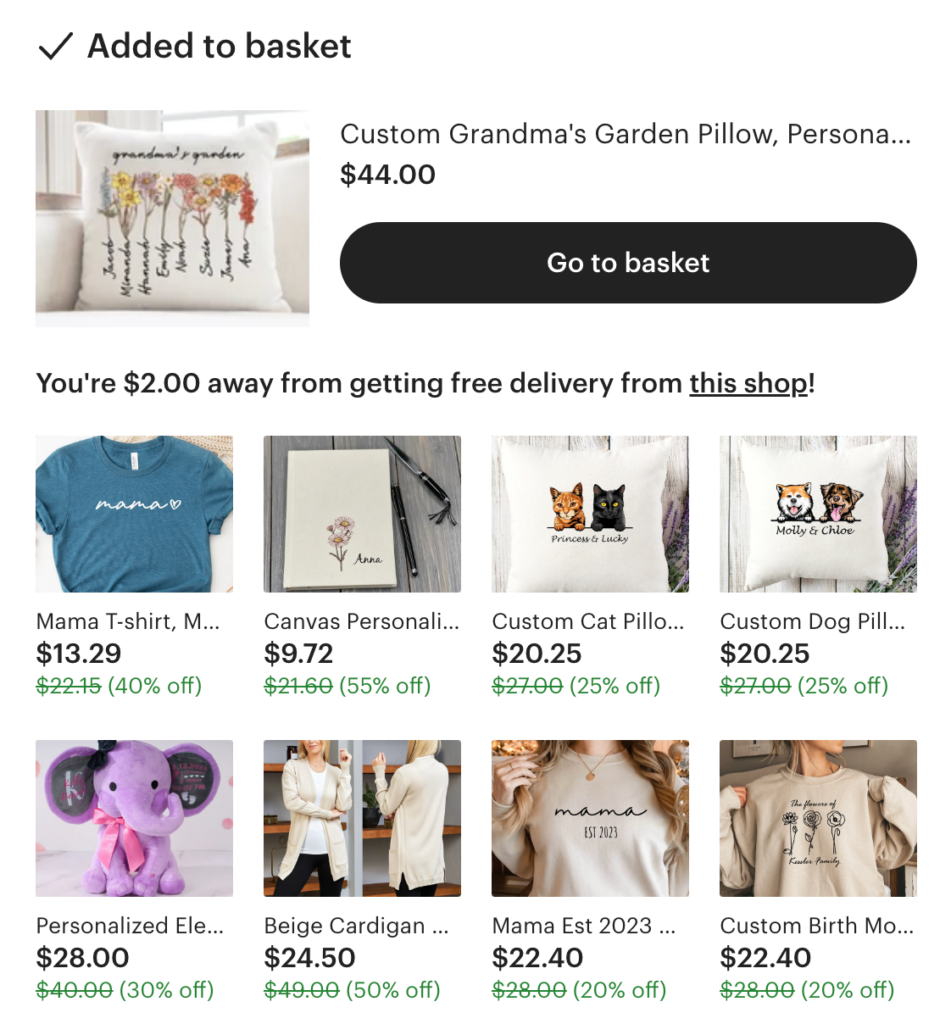
Low-Valued Accessories
Low-valued accessories at checkout have much higher chances of conversion than a higher-priced item. Leverage this idea and showcase complementary products at lesser prices.
For example, pants and T-shirts with sneakers.
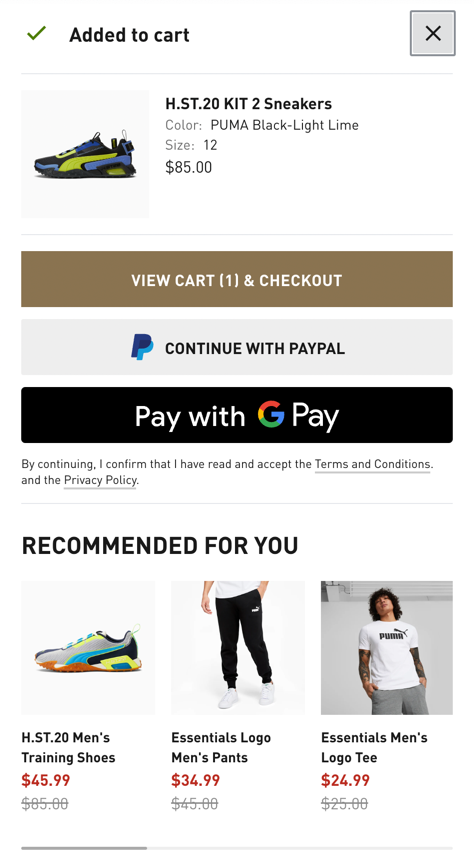
Order Confirmation Page
It is much easier to make your customers return to the store than acquire new users. Therefore, you must try to make your customers return to the shop even after completing a purchase.
The product recommendations on the order confirmation or ‘thank you’ page would help you with that. Let’s see how.
Recommendations Based On Shopping Trends
Making your customers shop for more products once they have completed a purchase is a difficult task. You can only engage with them by offering them what they really want.
This can be done by suggesting the products they have previously interacted with or similar products.

Conclusion
Implementing intelligent product recommendation strategies can significantly enhance the customer experience and drive sales for your business.
By embracing intelligent product recommendation strategies, you can boost customer satisfaction, increase conversions, and stay ahead of the competition in today’s dynamic market.
